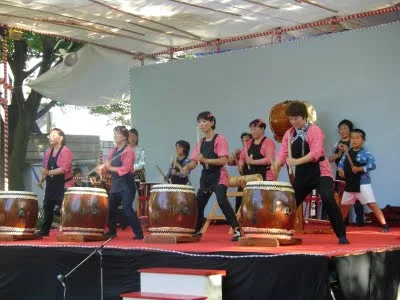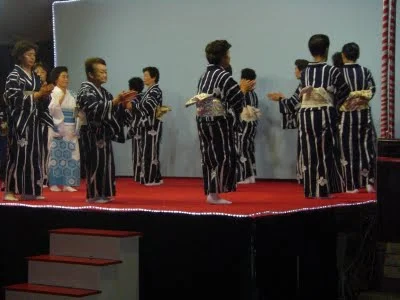Funabori tower, an integral part and main attraction of Tower hall Funabori, is also a place of conference, wedding parties, meetings, events and hotels. Calm and quiet Funabori station is just less than a minute walk from the tower hall Funabori.
Funabori Tower got its name from the place name Funabori. Funabori is near to Higashi Ojima and Ichinoe in Toei Shinjuku line. Funabori tower is approximately 7 minutes from Yawata/Motoyawata when we come from Narita Airport in Keisei line. A 7 minute walk from Keisei Yawata is required to reach Motoyawata in Toei Shinjuku line. It is recommendable to burn the extra fat accumulated! Japanese people are health conscious to the extent that they purposely make some of the destinations reachable by walking only!
It was around 6:30 PM when we started from Higashi Ojima with kids. Kids like to play outside and such journeys are ideal occasion to impart knowledge on them by talking about what the elders know about the place and history. Unfortunately I was not much informed on the importance of Tower hall Funabori.


We could see model statues of bride and groom on the first ground floor (First floor in Japan).Tower Hall Funabori is an ideal venue for holding events that ranges from expos to conferences to weddings. Funabori tower hall also have a bridal salon, restaurant and cinema. Funabori tower hall have a big hall, small hall, Banquette room, Event hall and Shop & Service room. Parking lot, Movie Theater, Exclusive service yard etc makes the Funabori tower hall a unique place for events.
 The staff at the ground floor guided us to the elevator (Erabeta in Japanese) which took us to the seventh floor. Came out of the elevator at the seventh floor, we walked on the corridor which is long that reached to the end of the building. There another staff guided to us to one of elevator. Baby strollers are allowed to take up to this point only.
The staff at the ground floor guided us to the elevator (Erabeta in Japanese) which took us to the seventh floor. Came out of the elevator at the seventh floor, we walked on the corridor which is long that reached to the end of the building. There another staff guided to us to one of elevator. Baby strollers are allowed to take up to this point only.We entered to the elevator to reach the top of the Funabori tower. The digital display inside the lift showed the distance we covered in meters. When the display showed 105 meters, the lift stopped. Conveying our Arigato gozaimasu to the lift operator, we entered to the observation tower area. It is built in a square shape allowing 360 degree view of the surrounding Tokyo city and skyscrapers.
The night view of Tokyo is exciting! The extreme engineering skills manifested through the construction of attractive tall structures illuminated with electric bulbs are a feast to the eyes.
We saw Tokyo Tower from the observation tower in dim light, Sky scrapers in Odaiba was also visible. The photos taken from the top of the Funabori Tower at night were not so clear.

The view of vehicles moving not so far away on the bridge along with Arakawa river was really amazing. Another attraction was the view of trains moving on Toei Shinjuku line from the top of the tower.

We spent more than one hour at the tower top. There were no crowd and the observation area was silent, except our children made some noise when they played. Funabori Tower in the Tower hall Funabori is a recommendable place to visit in Tokyo.
Funabori tower is free to visit. To reach Funabori Tower the following link have a pdf file showing the nearby places and approximate time to reach the tower from Narita Airport and Keisei line.
How to reach Funabori Tower and Tower Hall Funabori? Click here
For those who are interested to contact the Tower hall Funabori for any kind of events, conference, the following address and website address will help. The site is in Japanese language;
Tower Hall Funabori
4-1-1 Funabori
Tokyo, Japan
phone: +81 3 5676 2211
fax: +81 3 5676 2501
Funabori Tower Hall










